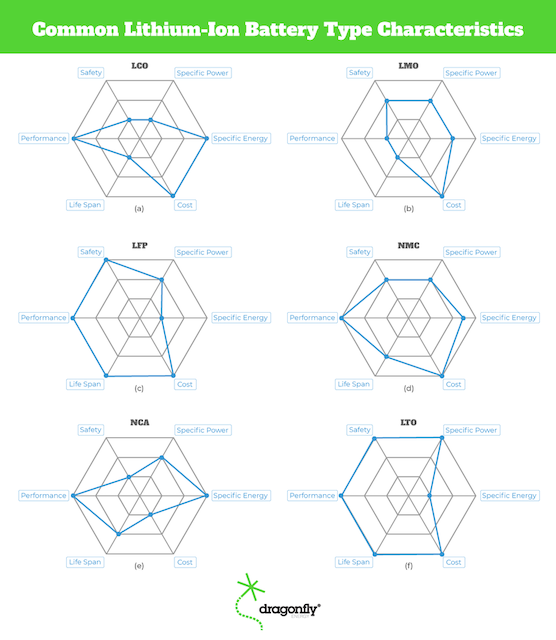Updated: End of August 2025 How Lithium Batteries Work How lithium-ion batteries work is very well explained in the video "How a Lithium Ion Battery Actually Works // Photorealistic // 16 Month Project". Although the demonstration shows a cylindrical lithium-ion battery, the underlying principle is the same for lithium-ion pouch and prismatic types of lithium-ion batteries. Lithium Titanium Oxide (LTO) batteries are a bit different due to their anode and cathode materials. The three types of "containers or form factorss" for lithium-ion batteries are the pouch, cylindrical and prismatic.
There are five recognized main cathode, positive electrode, chemistries and one lithium-ion anode, negative electrode, chemistries, with slight variants in the materials, used to create Lithium-ion batteries. The LTO is the one that uses a different anode chemistry. The video, "Types of Lithium ion battery with application | Lithium ion battery types LCO, LMO, LFP, NMC, NCA, LTO" note the "safest types of chemistries".
Safety was THE most important factor when selecting the battery chemistry for my KISS Dead Rail system!  The graphic is from a Website titled, "A Guide To The 6 Main Types Of Lithium Batteries". This graphic is useful in determining the chemistry's relative safety. The spider diagrams show the safety line at the upper left side in this graphic. Like the previous referenced video, LTO (Lithium Titanate) and LFP (Lithium Iron Phosphate) are shown as the safest. LCO (Lithium Cobalt Oxide) and NCA (Lithium Nickel Cobalt Aluminum Oxide) are denoted as the least safe. LMO (Lithium Manganese Oxide) and NMC (Lithium Nickel Manganese Cobalt Oxide) falls in-between the safest and least safe. I have chosen to use Lithium Iron Phosphate (LFP), Lithium Manganese Oxide (LMO) and Lithium Manganese Cobalt Oxide (NMC) cylindrical batteries for use with my KISS Dead Rail system. The physical size of cylindrical Lithium-ion batteries is described with a five digit identifier. Very common sizes are; 10440, 14500, 18650, 26650, etc. What are those digits telling us about the physical size of the battery? The first two digits of a 10440 size cylindrical Lithium-ion battery notes the approximate diameter in millimeters (~10mm). The next two digits note the length in millimeters (~44mm). The zero digit after 44 indicates that it is a cylindrical battery. A 14500 size cylindrical battery denotes a size of about 14mm in diameter, about 50mm long and that it is a cylindrical form factor. These two specific sizes are mentioned because a 10440 is approximately the same size as an AAA alkaline battery and the 14500 size is approximately the same size as an AA alkaline battery. This allows for the use of AAA and AA battery boxes to create battery packs with no soldering necessary.
|